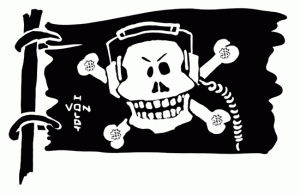 Here are several responses to my post guesstimating that pirate radio stations produce about 19,220 jobs per year worth $576,600,000 in income. Obviously my finding, calculated in about an hour, was a bit of a stretch. But it has stimulated an interesting discussion, as I hoped that it would.
Here are several responses to my post guesstimating that pirate radio stations produce about 19,220 jobs per year worth $576,600,000 in income. Obviously my finding, calculated in about an hour, was a bit of a stretch. But it has stimulated an interesting discussion, as I hoped that it would.
The first response comes from John Broomall of Christian Community Broadcasters. The second from broadcast technical consultant Robert H. Branch Jr.
John Broomall:
[This] is an informal analysis of the financial impact of pirate radio on American society. It – supposedly – is based on professional studies about the economic s of commercial FM radio. In reality it is science / economic fiction. If that is a indictment on the professional study as well, so be it.
False assumptions in the Pirate study:
1. That there are 450 pirate stations in the USA with all economic impact of a “half-billion.”
2. that all pirates are commercial
3. that are pirates are equally successful
4. even if jobs created are “worth” $30K a year each, that (without pirate radio) these individuals would be homeless with no economic impact on society. (in reality, even the homeless have an economic impact).
As LPFM operators, let’s apply these assumptions to the Low Power industry. Since there are about twice as many LPFMs as pirates with $576 million impact, that means that the 850 legal LPFMs have about a billion dollar impact, i.e. more than a million dollars impact each. How many LPFM’s have a million dollar impact on society each year? Any?
There is a pirate station near me. He is automated and apparently operates from his home with a family “volunteer” staff. Near zero financial impact. The same is true for legal WPCG-LP, operated by me and my wife on a volunteer basic from my home.
There is a non-financial difference – WPCG has six local newscasts; the pirate airs an Internet feed most of the time.
Robert H. Branch Jr. (responding to Broomall):
There is a major difference in the kind of pirate radio you describe and the reality in places like New York City and South Florida. These are full-on commercial radio stations that employ staff and “protection” attorneys to protect their interests. From their formats it would appear that they have sizeable incomes. In many cases, they are minority interests who have their city ways of staying in existence, despite state and federal laws that protect them. They are ruthless in their pursuit. I have some first hand experience with triangulating locations and mitigating this interference caused to legitimate broadcasters.
I agree that the study may be skewed, but it is absolutely not baseless. Also, it is much more profitable for them to be pirates than LPFM’s because they do not honor any power or height limits. The standard FCC fines for a pirate operator are small in comparison to the revenues. I have had personal knowledge (even photos) of pirate radio stations that operate from 500 watts to 2.5 kW in major metro’s. Many advertisers on pirate radio stations have no idea the operations are not legitimate radio operations. These include press packets and rate cards. The impact is not insignificant. However, my experience in smaller markets is as you describe.
A couple of comments and clarifications from my end. John Broomall is right to argue that my estimate of the number of unlicensed stations in the United States is speculative. A more precise jobs calculation would have to ferret the correct number out.
But I never said that all pirate stations are commercial or equally successful. Here’s what I wrote:
Many pirate stations run on volunteer power. But not a few, such as recently prosecuted Daz Hits radio, have strong roots in their communities. They run income generating community events and sometimes air commercials. Thus these stations employ paid deejays, managers, event managers, food service workers, entertainers, and engineers. Thus I estimate that on average, your pirate radio station employs eight people in full or part time positions. That’s 3,600 direct jobs.
This was an estimate of job creation on aggregate, not assuming the same individual station job creation level across the board.
But I do think that this sort of methodology can be applied to LPFM stations, and they may have more of an impact than we suspect. Another “report” coming soon . . . <bwahaha!>


